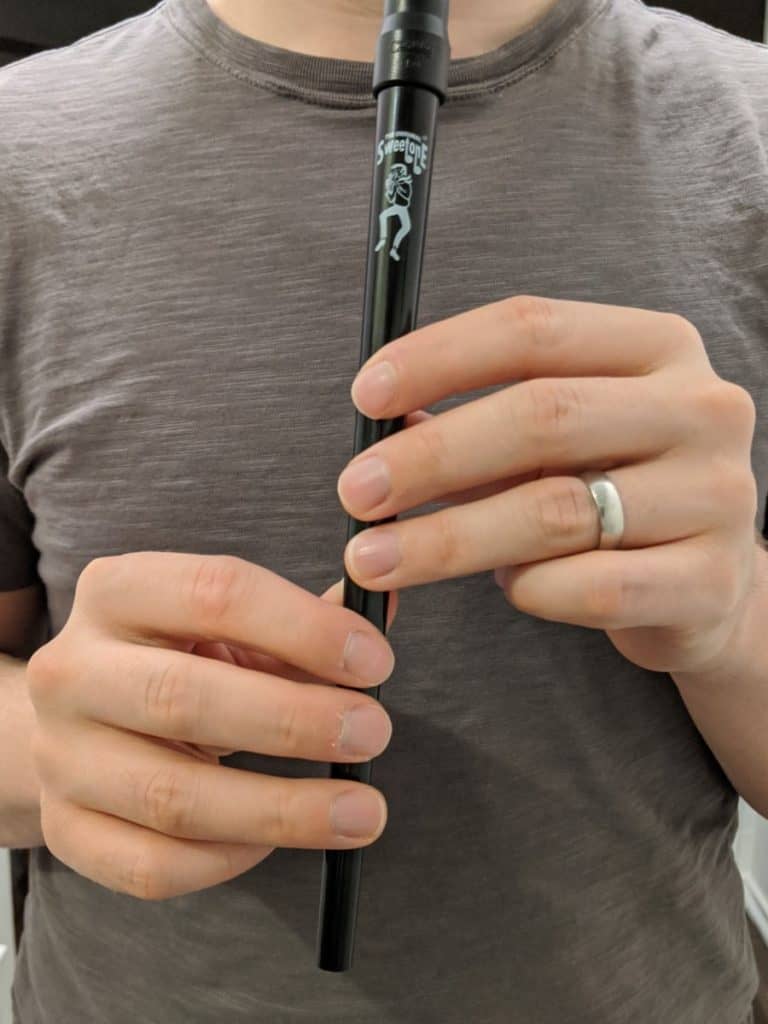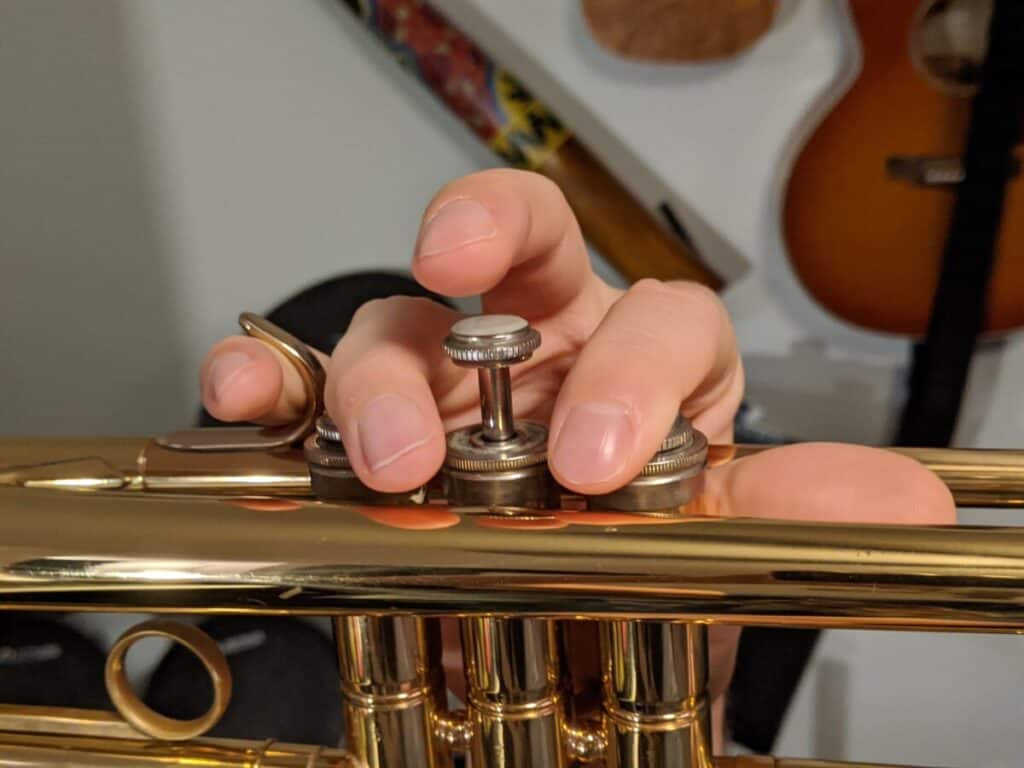This post contains affiliate links. We earn commissions if you purchase products from retailers after clicking on a link from our site. As an Amazon Associate, we earn from qualifying purchases.
My musical friend, I’m so glad you’re here! This is such an interesting question that has probably bothered you for a long time–why are all the instruments in the band in different keys? It makes playing music so much more complex–and if you want to play other instruments’ music you have to transpose which is a whole other mess. Why why why?
Band instruments are in different keys for two primary reasons:
- Instruments in a band have different normal playing ranges–which means that they are designed to play at different pitches. To prevent instruments from playing solely in ledger lines, they are designed for different keys and clefs.
- Depending on the time period when the instrument is designed, sometimes tradition plays a factor as to why certain instruments are designed for specific keys.
- Some beginner instruments are keyed down to be easier to play
So, pitch differences and traditions? That’s it? Read on and it will all make sense. I’ll put in some images to help.
Instruments In Different Keys Because Of Natural Pitch Differences
If you want a refresher as to what it means for an instrument to be in a particular key, make sure and check out this section first.
Wind Instruments are designed to slot into different pitches with different fingerings or slide lengths. But composers had a problem, they wanted instruments that could play high notes and low notes, and medium notes, and everything in between.
But it turns out that different instruments are better at playing high notes than others.
A couple of examples:
- Trumpets for example aren’t super great at low notes, and their high notes sound like air escaping from a balloon, but they are terrific at notes in the midrange.
- Trombones are terrific at low notes but are not so good at high notes
- Flutes are fantastic at high notes, and not great at low notes.
- Saxophones actually come in 4 different main styles to be able to play all the notes: Soprano (high), Alto (high-mid), Tenor (mid), and Baritone (low-mid). (there are even bass saxophones… but you don’t see them all the time)
So, great–instruments are better at different pitches than others, what does that have to do with keys?
Well, there are a couple of things,
Instruments Are Designed For a Specific Range
As was mentioned, different instruments are designed for different pitches. Unfortunately, aligning every instrument so the bottom of its range matches with C in one octave or another is challenging.
So instead, the instrument becomes a “transposing instrument” which means that to the player they are playing a C major scale, but to everyone else, they are playing a Bb major scale, or a G major scale, or whatever, depending on the particular instrument.
They decided to transpose the music to be in a different key for the player so they don’t have to play a bunch of sharps and flats making it hard to read.
Besides of the design of the instrument, there is also sheet music, itself:
Sheet Music Has a Big Limitation
The problem with sheet music is that it only comfortably accommodates 20 notes without using ledger lines.

By the way, looking for recording equipment and musical instruments? Check out Sweetwater.com for microphones, monitors, audio interface or any other recording gear that you could ever need. (Affiliate Link)
Ledger lines allow sheet music to extend its range. However, ledger lines make sheet music incredibly difficult to read.

To fix that, a composer has two tools, using clefs, or to design the instruments in different keys to accommodate the instrument’s natural sound.
Helping Out Beginners
This is a reason, although to me, is not a great reason–in the case of some (I’d argue most) wind instruments, it’s easier to play lower notes than higher notes.
In the case of trumpets, many professional trumpeters play with a C trumpet, while students often play with a Bb trumpet.
The beginner gets a small favor because their instruments are one whole step lower than a C trumpet. This makes it easier to play solo music that’s designed for Bb instruments as its slightly slower.
Tradition
The truth is… the origin of the music of that we play today doesn’t have an epiphany moment where it was all designed in a single summer. Music has grown and evolved with multiple systems overlapping each other over the course of hundreds of years.
Many instruments’ design has not changed very much for a hundred years.
For example, Bb trumpets vs. C trumpets, in my opinion, the benefit for beginners is not worth the transposing confusion. But there’s a tradition of beginners to play Bb trumpets and that’s just the way it has been.
Why Aren’t All Instruments In The Same Key?
The reasons why instruments aren’t in the same key are many, just a few to list:
- The more sharps and flats a key signature for a song has, the more difficult it is to play
- More convenient for the bottom of the range of the instrument to match C4
- Some traditional instrument design has fingerings or slide positions that don’t align with Concert C pitch
The truth is, that it’s completely possible for all instruments to play in the same key. It’s mostly just the way our music has evolved. It perhaps would be best if the sheet music were to change to accommodate that, but that’s not likely to happen. It’s just something we have to get used to.
What Does It Mean For An Instrument To Be In A Particular Key?
Wind Instruments have codified fingerings to play certain notes. The instrument length can be adjusted so that the fingerings align with certain groups of notes.

One thing to remember is that there is a reference pitch/key that all the other instruments are based around, called “Concert Pitch“. Non-wind instruments are generally in concert pitch (think pianos, xylophones, etc).
This is kind of complicated, but stay with me, I’ll explain this in a way you’ll be able to see intuitively. I’m going to talk about trumpets to help us out.
Trumpets in C and Bb
There are two keys for a trumpet to be tuned to. The key of C, and the key of Bb.
If you recall, the notes of a C major scale are as follows (the number is the octave):
| Frequency of note in Hz | Note |
|---|---|
| 261.63 | C4 |
| 293.66 | D4 |
| 329.63 | E4 |
| 349.23 | F4 |
| 392.00 | G4 |
| 440.00 | A4 |
| 493.88 | B4 |
| 523.25 | C5 |
The trumpet has three buttons to create its fingerings.

If you wanted to play the C major scale on a trumpet tuned to C, you would play the following fingerings, and these are the actual note fingerings you’d play:
| Frequency of note in Hz | Actual Note In Concert Pitch | Note in C Trumpet Sheet Music | Trumpet Fingerings |
|---|---|---|---|
| 261.63 | C4 | C4 | Open (no buttons pressed) |
| 293.66 | D4 | D4 | 1, 3 |
| 329.63 | E4 | E4 | 1, 2 |
| 349.23 | F4 | F4 | 1 |
| 392.00 | G4 | G4 | Open |
| 440.00 | A4 | A4 | 1, 2 |
| 493.88 | B4 | B4 | 2 |
| 523.25 | C5 | C5 | Open |
Now as I said, there are two common tunings for a trumpet. Here are the fingerings and ACTUAL note frequencies being played by a Bb trumpet:
| Frequency of note in Hz | Actual Note In Concert Pitch | Note in Sheet Music | Trumpet Fingerings |
|---|---|---|---|
| 233.08 | Bb4 | C4 | Open (no buttons pressed) |
| 261.63 | C4 | D4 | 1, 3 |
| 293.66 | D4 | E4 | 1, 2 |
| 311.13 | Eb4 | F4 | 1 |
| 349.23 | F4 | G4 | Open |
| 392.00 | G4 | A4 | 1, 2 |
| 440.00 | A4 | B4 | 2 |
| 466.16 | Bb4 | C5 | Open |
Okay, check this out. On Bb trumpet sheet music, when you play C4, you are actually playing concert Bb4 (one whole step lower than concert C). But notice: the trumpet fingerings are identical!
This is what it means for an instrument to be tuned to a different key. To the unsuspecting musician, their sheet music tells them they are playing a certain note, but they are actually playing a different note in reference to Concert pitch.
And man, isn’t that a confusing solution to this problem? Yeah, I agree.
Summary For What Does It Mean To Be In Different Keys
So, if I was to try and sum up this explanation:
Wind Instruments are in a different key than Concert C if their sheet music notes do not match concert pitch notes, but are instead offset by a determined amount of notes.
